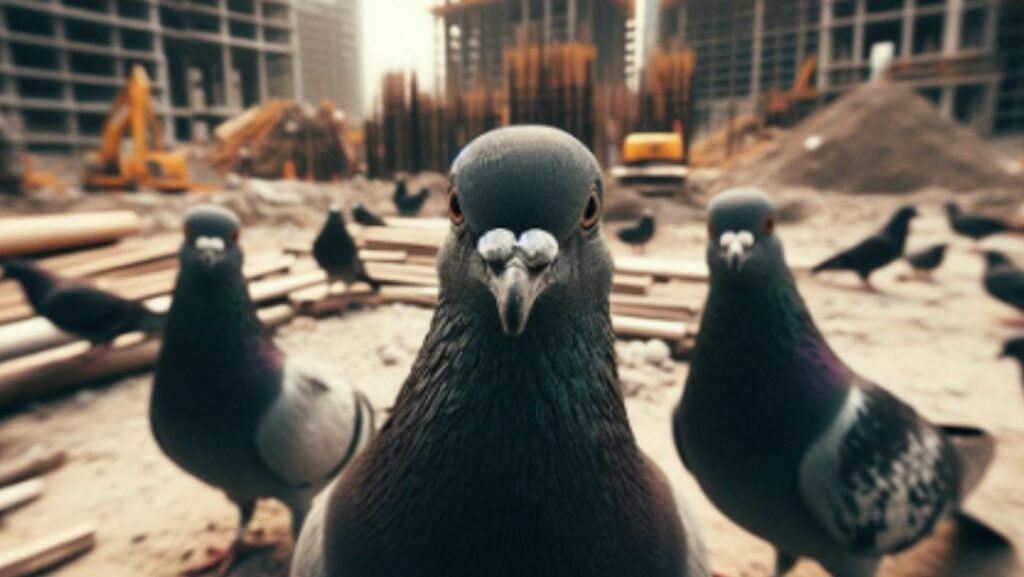Practical Tips to Keep Construction Sites Bird-Free

Birds can become a serious nuisance at construction sites, causing delays and potential safety hazards. To prevent this, it’s crucial to implement effective bird-proofing strategies before the nesting season begins. By addressing the issue proactively, contractors can focus on the project without disruptions.
Creating a hostile environment for birds is a key step. Techniques such as landscape alterations, maintaining cleanliness, and utilizing bird diversion equipment are essential.
Monitoring and continuous maintenance of bird-proofing measures ensure long-term effectiveness. Regularly inspecting and adjusting bird deterrents helps to keep the site bird-free, promoting a safer and more efficient work environment. Understanding how to keep birds out of construction sites is fundamental to maintaining site integrity and project timelines.
Key Takeaways
- Proactive bird-proofing prevents disruptions.
- Creating a hostile environment deters bird presence.
- Regular maintenance ensures long-term effectiveness.
Creating a Hostile Environment for Birds
To keep birds away from construction sites, it’s crucial to create an environment that discourages them from nesting or lingering. This involves using physical barriers, visual and auditory deterrents, and strategic application of chemical repellents.
Implementing Physical Barriers
Physical barriers like bird netting and wire mesh are effective at preventing birds from accessing areas where they might nest.
Bird netting can be draped over structures to block birds from reaching potential nesting spots. Wire mesh is another option that can be used to cover openings and vents, which stops birds from entering.
Bird spikes can be installed on ledges and flat surfaces to keep birds from landing. These spikes don’t harm the birds; they simply make perching uncomfortable.
A combination of netting, mesh, and spikes covers various surfaces and entry points, ensuring birds find the site inhospitable.
Deploying Visual and Auditory Deterrents
Visual deterrents such as reflective surfaces, shiny objects, and reflective tape can scare birds away. Placing these items around the site disrupts the birds’ comfort and causes them to avoid the area.
Predator decoys like owls or snakes placed in strategic locations can trick birds into thinking that predators are nearby.
Scarecrows and wind chimes can also be used to create movement and noise, further deterring birds.
For auditory deterrents, ultrasonic devices emitting high-frequency sounds that are unpleasant to birds can help. Birds find such sounds distressing and will avoid the areas where they are used.
Positioning these deterrents in key locations ensures maximum coverage and effectiveness.
Using Chemical Repellents Strategically
Sprays, essential oils, and foul odors can be applied to surfaces to make them unattractive to birds. Bird repellents made from natural ingredients or essential oils like peppermint can be sprayed in areas where birds are likely to land or nest.
These repellents don’t harm the birds but make the environment unpleasant for them.
Chemical repellents need to be reapplied periodically, especially after rain or in areas with high exposure to elements.
The strategic use of such repellents, targeting specific nesting and perching spots, ensures long-term effectivity without harming the birds.
Maintaining and Monitoring the Construction Site
Ensuring a bird-free construction site involves maintaining cleanliness, sealing entry points, and conducting regular inspections to deter birds and eliminate nesting opportunities.
Practices in Cleanliness and Maintenance
Maintaining cleanliness is pivotal in preventing birds, especially pigeons, from claiming the site as a habitat. Regularly removing potential nesting materials and food sources inhibits birds from settling in.
Sites must be free from food scraps and other waste, which can attract birds. Providing designated eating areas for workers can prevent accidental feeding of birds.
Employing site safety audits can help identify cleanliness issues. A clean environment is less appealing to birds seeking shelter. By integrating daily cleaning routines, construction sites can actively prevent bird-related disturbances.
Sealing Entry Points and Reducing Attractants
One effective bird control measure is sealing entry points. Birds often exploit small openings to build nests. By using mesh or netting, entry points can be closed off to prevent birds from entering.
Proper maintenance includes checking for cracks or gaps in structures and ensuring they are sealed. Reducing attractants like stagnant water or food sources further minimizes the chances of birds setting up nests.
Bird-proofing techniques, such as installing reflective bird diverters, can be effective. Ensuring that the site is not bird-friendly through these measures prevents nesting and keeps the workspace safe.
Regular Inspections and Bird Control Methods
Regular inspections are crucial for identifying areas where birds may attempt to nest. These should be conducted by bird control experts who can pinpoint potential issues.
Using humane bird control methods like bird netting can effectively prevent nests. Early detection and intervention are key. Steps such as professional bird surveys can help highlight habitats and issues before they become significant.
Monitoring and research on specific bird species can inform the best control methods. By staying proactive with regular maintenance and inspection routines, construction sites can efficiently prevent and manage bird-related problems.
Conclusion
Implementing effective bird control measures at construction sites is essential for safety and project efficiency. Techniques such as ultrasonic devices and bird netting can effectively deter birds. Landscape alterations and bird repellents further help in minimizing bird-related disruptions.
Customized solutions tailored to specific site needs ensure a bird-free environment, allowing construction activities to proceed without interruptions.



 What Every Cleaning Company Should Know About Slip and Fall Liability
What Every Cleaning Company Should Know About Slip and Fall Liability  The Simple Trick to Stop Your Coffee Table from Becoming a Clutter Magnet
The Simple Trick to Stop Your Coffee Table from Becoming a Clutter Magnet  Mobile Apps vs Browser Gaming: What’s Better
Mobile Apps vs Browser Gaming: What’s Better